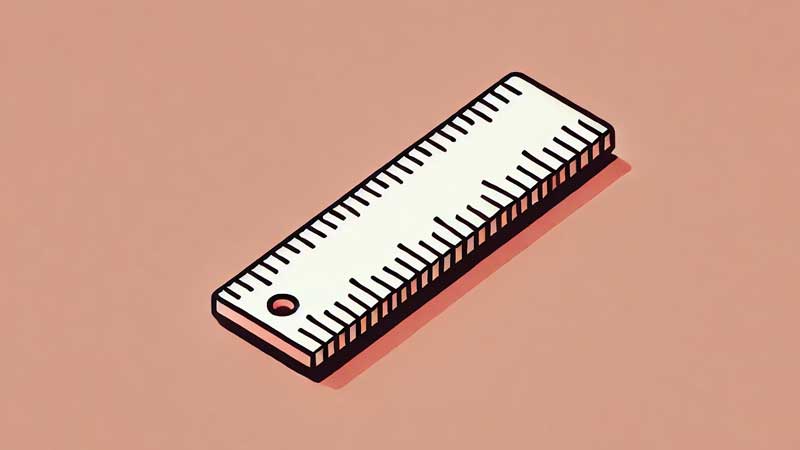This online length converter allows users to quickly and easily convert between any units of length measurement. It supports various units, from commonly used ones like meters, kilometers, and miles to more specialized units such as angstroms, light-years, and cubits. The converter enables instant, accurate conversions between these units, making it useful for professionals, students, or anyone needing precise length conversions.
Ultimate Length Converter
This tool automatically converts between any pair of length units. Simply enter a value, pick a measurement unit, and it will calculate the result in the other unit automatically.
Meter (m) - The base unit of length in the International System of Units (SI).
Foot (ft) - A unit in the imperial and US customary systems.
How to Use the Converter
Enter the value you want to convert in the “Input Value” field and select the unit from the drop-down list next to it. The tool will automatically calculate and display the equivalent length in your chosen output unit. You can also adjust the decimal places for more precision and clear all fields with the “Clear All” button when needed.

Which Measurement Units Are in The Converter
- Meter (m) – The base unit of length in the International System of Units (SI), widely used for measuring distances.
- Kilometer (km) – A unit of length equal to 1,000 meters, commonly used for measuring longer distances, such as roads.
- Centimeter (cm) – A metric unit equal to one-hundredth of a meter, used for everyday measurements like height and objects.
- Millimeter (mm) – A metric unit equal to one-thousandth of a meter, commonly used for smaller measurements.
- Mile (mi) – A unit of length equal to 1,609.34 meters, used in the US and UK for longer distances.
- Yard (yd) – A unit of length equal to 0.9144 meters, used primarily in the US and UK.
- Foot (ft) – A unit of length equal to 0.3048 meters, commonly used in the US, especially for height and distances.
- Inch (in) – A unit of length equal to 1/12 of a foot or 0.0254 meters, used for smaller everyday measurements.
- Nautical Mile (nmi) – A unit used in marine and air navigation, equal to 1,852 meters.
- Micrometer (µm) – A unit equal to one-millionth of a meter, used for measuring microscopic distances.
- Nanometer (nm) – A unit equal to one-billionth of a meter, often used in scientific measurements at the atomic level.
- Furlong – A traditional unit equal to 201.168 meters, used mostly in horse racing.
- Rod (Perch or Pole) – A traditional unit equal to 5.0292 meters, used historically for land measurements.
- Chain – A unit of length equal to 20.1168 meters, primarily used in land surveying.
- Astronomical Unit (AU) – A unit equal to the average distance between the Earth and the Sun, about 149.6 million kilometers, used in astronomy.
- Light-Year – The distance light travels in one year, about 9.461 trillion kilometers, used for astronomical distances.
- Parsec – A unit of length equal to about 3.26 light-years, used in astronomy for measuring interstellar distances.
- Angstrom (Å) – A unit equal to 0.1 nanometers, used for measuring atomic and molecular distances.
- League – A traditional unit of length equal to 3 nautical miles, or about 5.56 kilometers.
- Cubit – An ancient unit of length based on the length of the forearm, approximately 45.72 cm.
- Hand – A unit used primarily to measure the height of horses, equal to 4 inches or 10.16 cm.
- Span – A traditional unit of length equal to the width of a hand when spread out, approximately 22.86 cm.
- Pica – A unit used in typography, equal to 1/6 of an inch or about 4.233 mm.
- Point – Another typography unit equal to 1/72 of an inch or about 0.3528 mm.
- Fathom – A maritime unit of length equal to 6 feet or 1.8288 meters.
- Ell – A historical unit used for measuring cloth, approximately 1.143 meters.
- Digit – An ancient unit equal to the width of a finger, approximately 1.9 cm.
- Barleycorn – An old English unit equal to about 1/3 of an inch or 8.47 mm, used in shoe sizing.
- Planck Length – A theoretical unit equal to about 1.616 × 10^-35 meters, used in physics to describe quantum scales.
© CalcuLife.com
Would you like this converter to become better in any way? Let us know what do you have in mind in the comments!








Leave A Comment